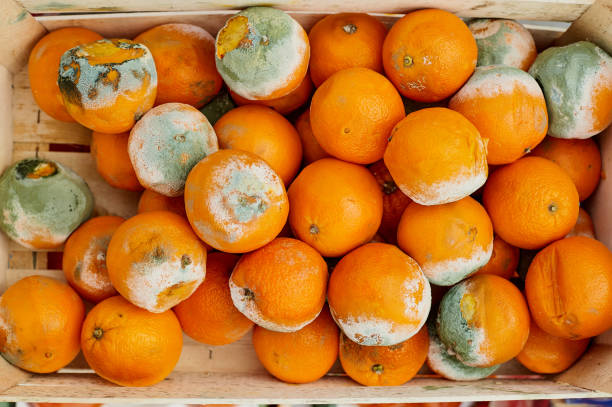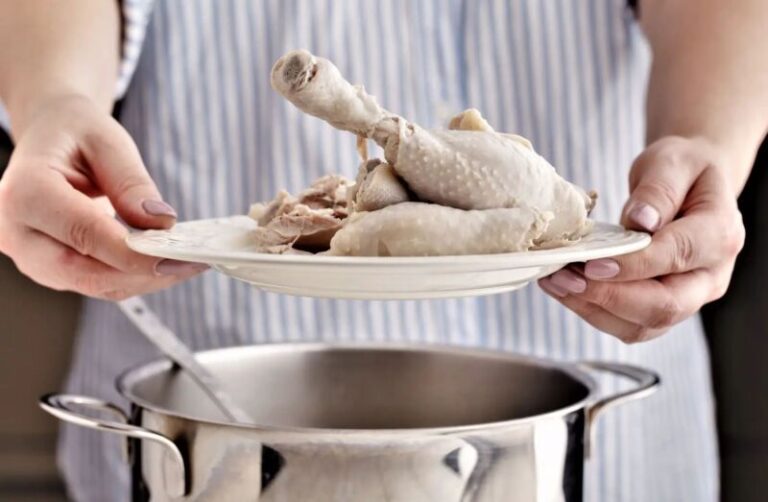How to Tell if Your Orange is Bad?
The satisfying snap and spray of citrus as you peel an orange. The sweet juicy pop of segments in your mouth. There’s nothing quite like enjoying a perfect, fresh orange.
That feeling of excitement quickly sours when you slice into an orange and get a whiff of something rotten. I lifted the clementine to my face, eagerly anticipating the bright, tangy scent. Instead, I recoiled from the pungent stench of mold and decay. My appetite vanished. This orange was bad news.
We’ve all been there. That moment of citrus betrayal when your orange turns out to be past its prime. Biting into a bad orange can ruin your whole day. A spoiled orange not only tastes nasty but could also make you sick. Before you peel, learn how to tell if an orange has gone bad. Knowing how to identify signs of spoilage is key to avoiding rotten oranges.
Check the Peel and Rind for Signs of a Bad Orange
Oranges may look perfectly ripe on the outside but be rotten on the inside. Here are some signs of spoilage to check for on the rind:
A soft or mushy texture indicates an old orange past its prime. Press gently on the peel to check for this. A fresh orange will feel firm.
If the orange peel appears shriveled or dried out, it has lost moisture and freshness. A healthy, juicy orange feels springy when you give it a squeeze.
Keep an eye out for brown spots or discoloration on the rind, which signal mold and bacteria growth. Some common citrus molds include penicillium, alternaria, and aspergillus.
Visible mold growing on the rind is a sure sign of spoilage. Even a small spot of mold can render the whole fruit unsafe to eat. Don’t take chances with mold!
Sniff Test for Orange Freshness
Our noses can often detect spoilage before our eyes. Here’s how to sniff out a bad orange:
Take a big whiff of the orange. A foul, musty or stale odor means it’s gone bad. Good oranges smell sweet and citrusy. Trust your nose.
If the orange gives off a fermented or winy smell, it’s started to ferment. Toss fermented oranges, as they can cause stomach upset.
A sulfurous rotten egg or onion smell indicates advanced spoilage. This pungent odor is a huge red flag to discard the orange.
Sniff the stem end in particular. Decay often starts at the stem and gives off the strongest odor.
Bottom line: if your orange smells funky, it’s not fit for eating. When in doubt, throw it out.
Peel Back the Rind and Inspect the Interior
To fully determine if an orange has gone bad, you need to peek inside. Here’s what to look for:
Cut the orange open and check for mold. If you spot any fuzzy growth, discard the orange. Mold penetrates deep into the fruit.
A slimy texture or film on the segments is a bad sign. This slime indicates bacterial growth.
Brown, mushy spots throughout the flesh mean the orange is rotting from the inside. Even if the rest looks okay, cut away any mushy parts.
Dry, shriveled segments tell you the orange is stale and past its prime. A juicy orange should glisten.
Taste a segment if you’re still unsure. If it’s bitter, fermented or just tastes off, say bye-bye to that bad orange!
Proper Storage Extends Your Orange’s Shelf Life
To help your oranges last, store them properly. Here are some tips:
For longest shelf life, store unwashed oranges in the refrigerator crisper drawer. They’ll keep for 3-4 weeks refrigerated.
Oranges left at room temperature only last 1-2 weeks before spoiling. The fridge preserves freshness.
Allow airflow by using mesh or paper bags. Prevent mold growth by avoiding airtight plastic bags.
Separate any spoiled oranges from the good ones. One bad orange speeds up spoilage of the whole batch.
Store cut oranges in an airtight container in the fridge. They’ll keep for 3-5 days. Discard when moldy or dried out.
Proper storage won’t make a bad orange good again, but it keeps good oranges from going bad too quickly.
Don’t Wait Until It’s Too Late! When to Toss Oranges
At the first sign of spoilage, don’t wait around. Say bye-bye to bad oranges right away, before mold spreads or they make someone sick.
Check firmness, smell, mold, and taste test frequently. If there’s even a hint of rot, it’s time to toss. Cut open if you’re unsure. It’s better to be safe than sorry.
Even a small spot of mold means discard the whole orange. Mold can spread quickly to the entire fruit, even if you can’t see it.
The first signs of a bad orange mean it’s time to throw it out. Don’t wait until it’s completely spoiled and rotten. Trust your judgment.
FAQs About Determining When Oranges Go Bad
How long do whole oranges last refrigerated compared to room temperature?
Refrigerated oranges will last 3-4 weeks. At room temp, toss oranges after 1-2 weeks.
Can you freeze oranges?
Yes! Frozen oranges work great for smoothies, juice, and baking. Peel, divide into sections, and freeze in airtight bags.
How long does fresh orange juice last refrigerated?
Unopened orange juice will keep in the fridge for 1-2 weeks. Once opened, drink within 3-5 days.
Can you eat moldy oranges if you cut away the mold?
No, it’s unsafe. Mold can penetrate deep into the fruit so it’s impossible to fully remove. Always discard moldy oranges.
Do bad oranges float?
Yes, as oranges spoil and ferment, they can begin to float. Floating isn’t a foolproof test, but it can indicate an orange has gone bad.
In Summary: Trust Your Senses to Avoid Bad Oranges
Avoiding bad oranges comes down to using your senses and acting fast at the first signs of spoilage. Look for mold, mushy spots, dryness, and discoloration. Give suspect oranges a sniff test – rancid odors mean discard. Peel back citrus skin and inspect the fruit inside. Cut open if you’re unsure. Check for slime, decay, or fermented taste.
Storing oranges properly in the refrigerator extends shelf life. But once an orange shows signs of spoilage, don’t take chances. When in doubt, throw it out! Nobody enjoys the nasty surprise of a rotten orange.
Do you have any tips for identifying bad oranges? Share your citrus wisdom in the comments to help fellow readers steer clear of spoiled oranges.






